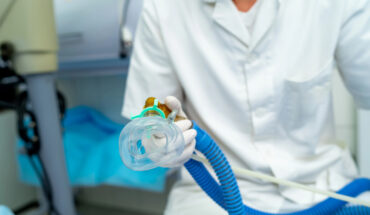
For generations, wisdom teeth removal has been treated as a dental rite of passage. Somewhere between the ages of 16 and 25, teenagers are rounded up—often in pairs, as if heading into combat together—and ushered into clinics to have their vestigial molars extracted before they cause trouble. On paper, it’s a preventive measure. In reality, it’s a psychological milestone, one of the first significant medical procedures that many young people experience while fully conscious of their bodies, fears, and autonomy.
This is where dentistry quietly intersects with psychology, where anesthesia becomes more than a clinical tool—it becomes an emotional mediator.
Adolescence and the Medical Threshold
Before wisdom teeth removal, most medical care in childhood is reactive: scraped knees, vaccinations, ear infections. These are handled under parental guidance with minimal existential reflection. But elective oral surgery? That is different. It introduces a profound question into the adolescent psyche: Do I trust someone to put me to sleep and cut into my body?
This moment marks a transition from passive patient to active participant. Young people do not simply lie back in the chair—they negotiate control, seek reassurance, and confront vulnerability. Some lean into humor, quoting TikTok compilations of post-anesthesia delirium. Others spiral privately, convinced they may be the one-in-a-million anesthesia failure scenario. The human brain, especially an anxious teenage brain, is adept at imagining statistical outliers as personal destiny.
The Double-Edged Role of Anesthesia
Anesthesia is often treated as the cure for fear. Ironically, it is sometimes the root of it. Local anesthesia leaves patients conscious of pressure and sound; general anesthesia trades sensation for surrender. Neither path is psychologically neutral.
Research shows that teenagers facing general anesthesia may experience anticipatory anxiety comparable to those undergoing more complex procedures. It’s not the surgery itself they fear—it’s the loss of control. Meanwhile, those offered only local anesthesia often fixate on the awareness they will retain throughout the procedure. Both options force a reckoning with bodily autonomy.
The crucial difference lies in communication. In the hands of considerate practitioners of all ages, anesthesia is not positioned as an inevitability but as a conversation. Adolescents respond best when spoken to as decision-makers—not as passive subjects of medical routine. The best clinicians understand they are not merely numbing tissue; they are regulating emotion.
The Cultural Script of Pain and Bravery
Wisdom teeth removal has been culturally memed into comedic chaos—swollen cheeks, slurred confessionals, irrational declarations of love for nurses. While amusing, this cultural reduction has a darker side: it trivializes genuine fear.
Adolescents are told to “tough it out,” but fear of surgery isn’t immaturity—it’s neurological reality. The adolescent brain is hyper-reactive to anticipated pain. Studies confirm that teens experience pain-related anxiety more intensely than younger children or adults. Not because they are weaker, but because the emotional centers of their brain are fully ignited while the rational ones are still under construction.
Reframing wisdom teeth removal not as a test of pain tolerance but as an orchestrated act of self-care reshapes the narrative. A teenager who says, “I’m scared, but I’m still going,” is not a coward—they are a strategist.
The Aftermath: Healing Beyond the Jaw
Recovery from wisdom teeth removal is usually framed in terms of swelling, stitches, and soft food. But psychologically, many adolescents emerge from the experience with newfound confidence. They have gone under anesthesia and come back. They have faced their medical mortality—even if exaggerated—and survived.
This transforms future medical compliance. Someone who has already confronted sedation and incision is less likely to delay healthcare into adulthood. Early positive surgical experiences correlate strongly with long-term health engagement.
And for those with negative experiences? They don’t need silence—they need debriefing. A teen who emerges distraught should not be told to “get over it.” They should be asked, What was the worst moment? What felt out of your control? Anxiety metabolized becomes resilience. Anxiety ignored metastasizes into lifelong avoidance.
Parental Presence: Comfort or Complication?
Parents are both anchors and accelerants. Some adolescents find comfort in their mother or father’s quiet hand squeeze before the procedure. Others find that parental anxiety—even subtly expressed—exponentially magnifies their own.
Interestingly, clinics that allow young patients to set the terms of parental involvement often see calmer pre-operative behavior. When teenagers are permitted to choose whether Mum stays in the room or steps outside, their sense of control skyrockets. Autonomy, not sedation, is often the strongest tranquilizer.
The Future of Surgical Psychology in Dentistry
The next evolution in wisdom teeth removal is not technological—it’s psychological. While sedation options continue to expand, what truly matters is emotional literacy among practitioners. Whether they are freshly graduated or seasoned veterans, practitioners of all ages must recognize that they do not simply extract molars—they shepherd young minds through an initiation into adulthood.
A successful procedure is not defined only by clean incisions and proper clotting, but by how confidently the patient walks into their next medical encounter.
The wisdom teeth may be gone—but if handled well, something wiser always grows in their place.




